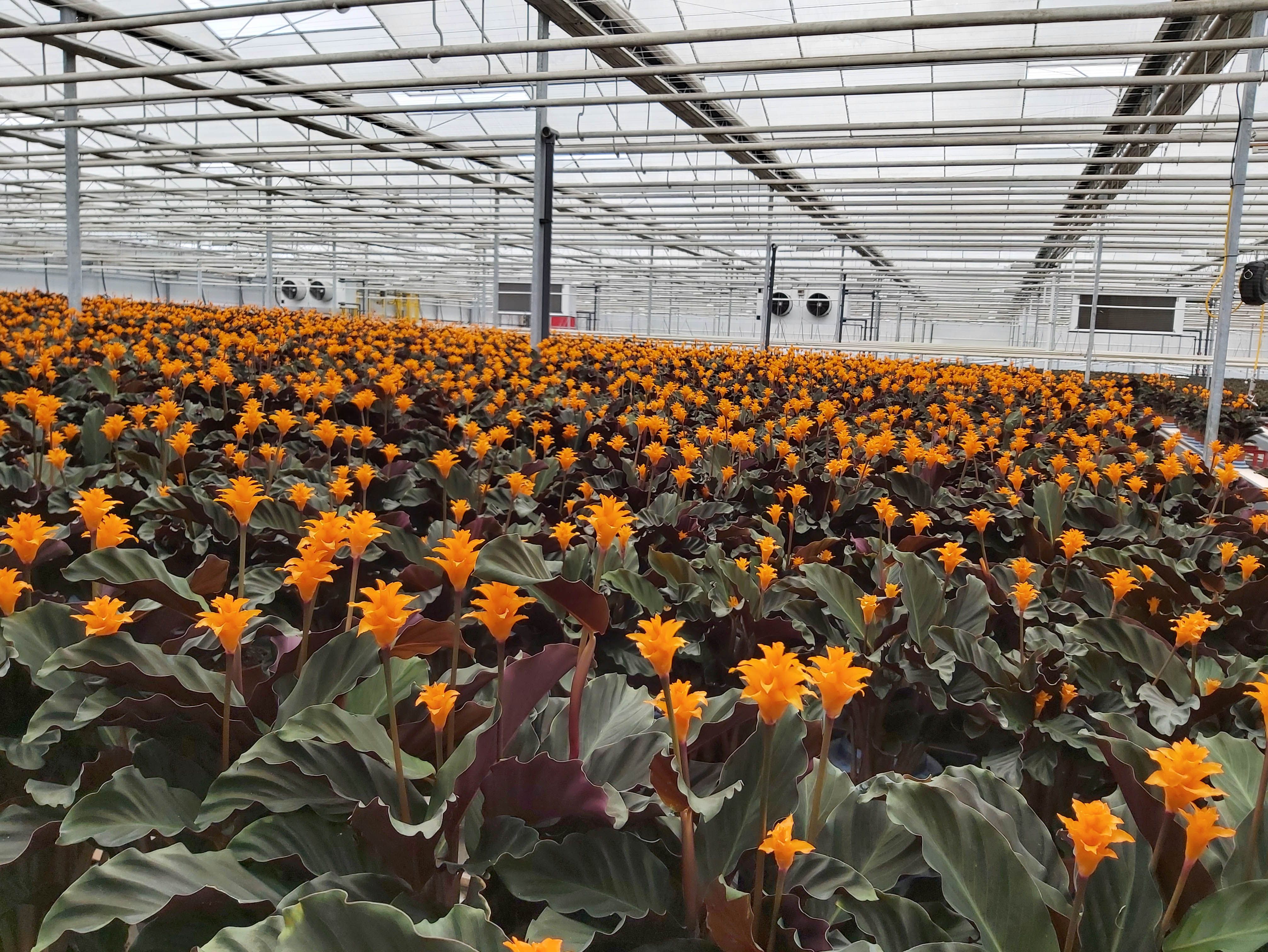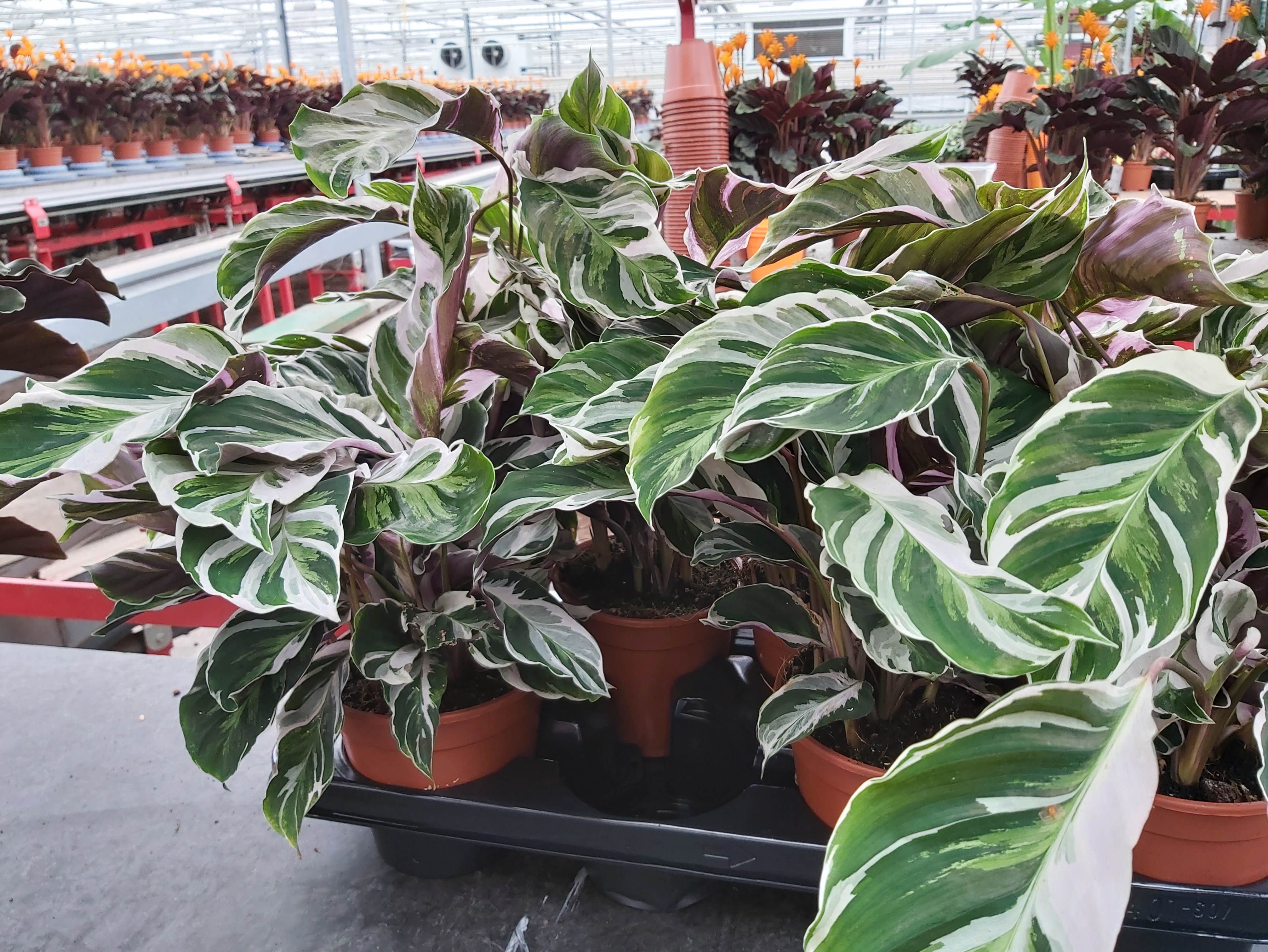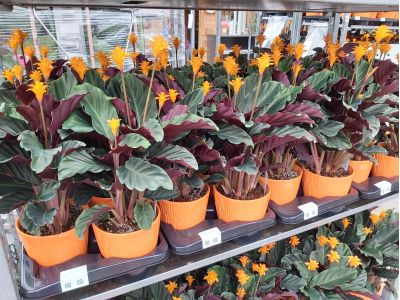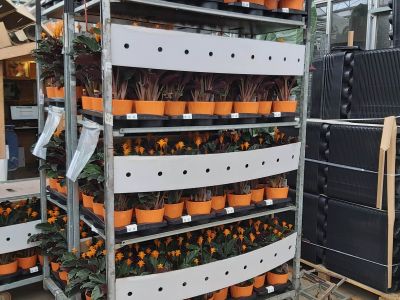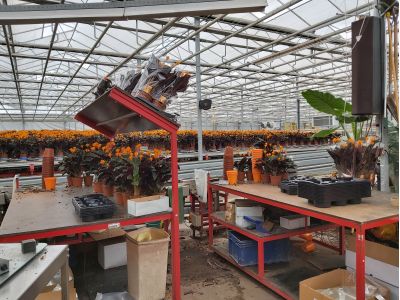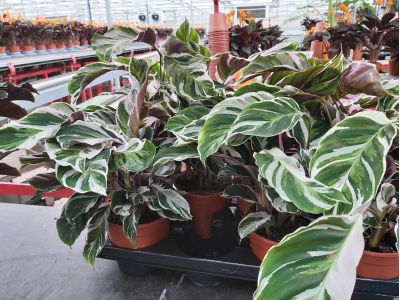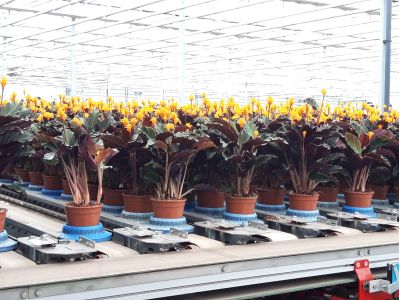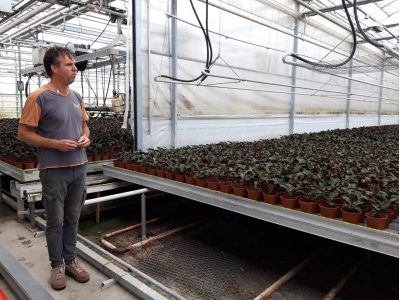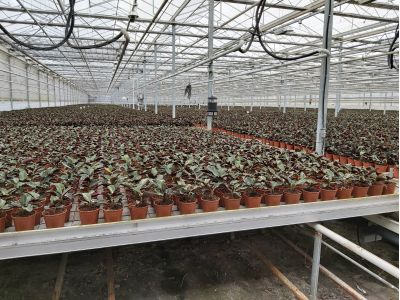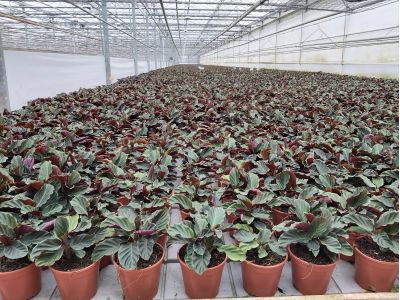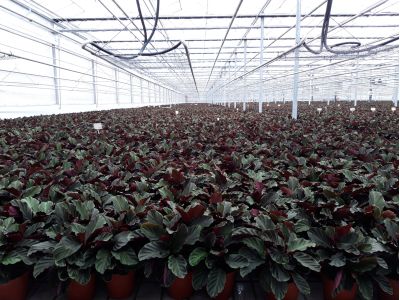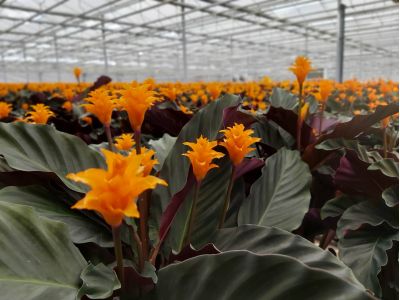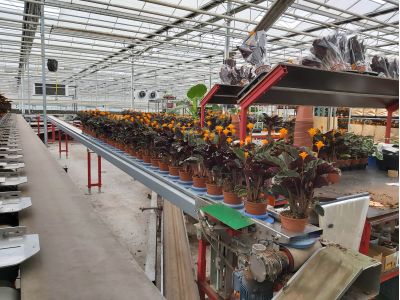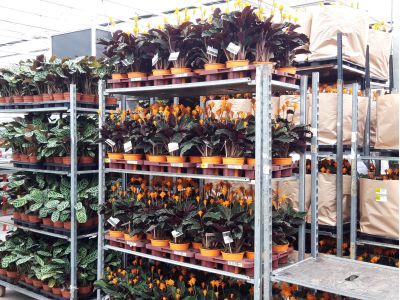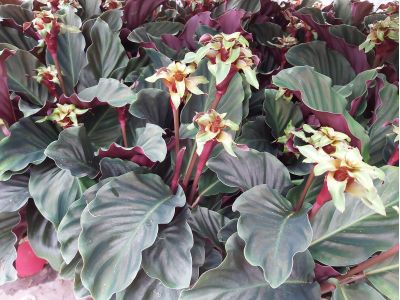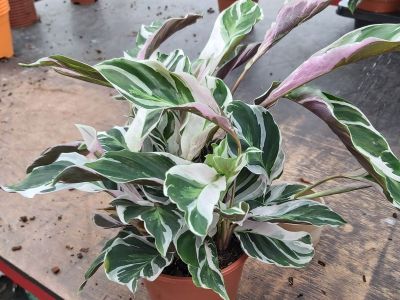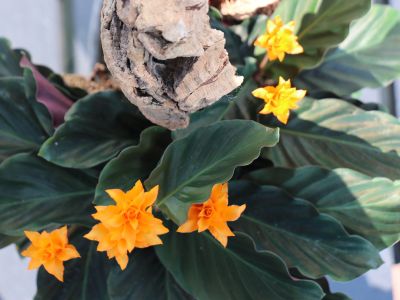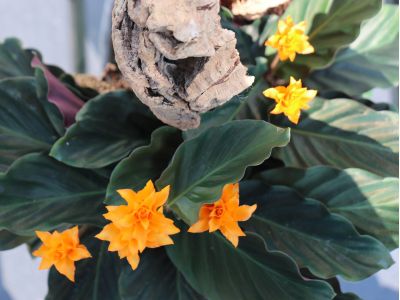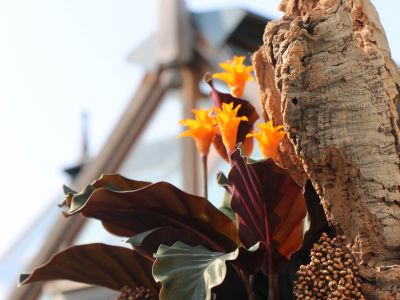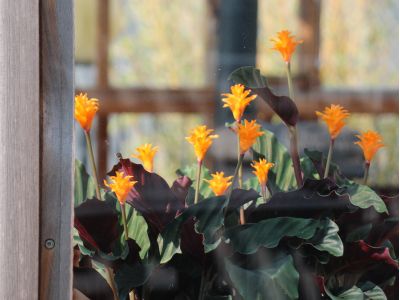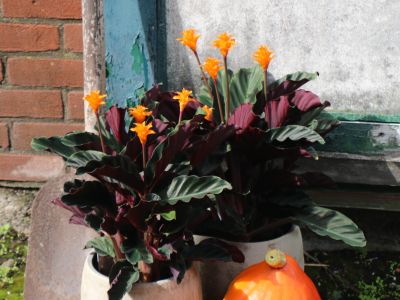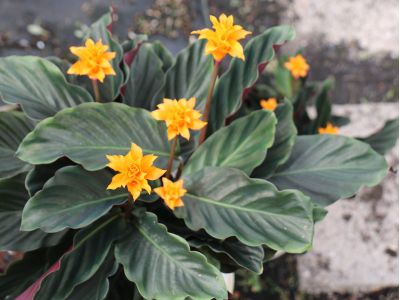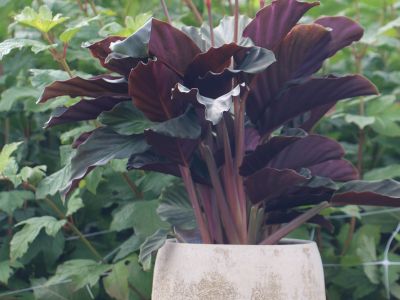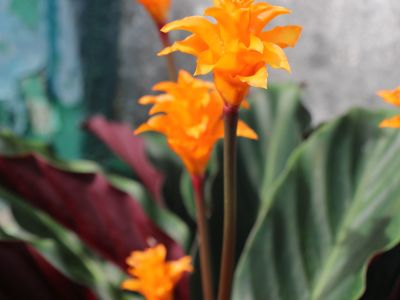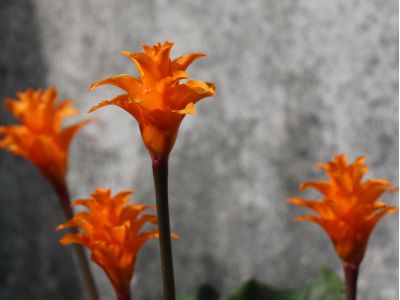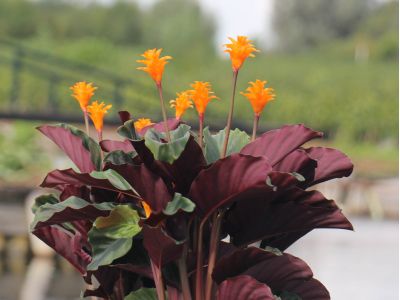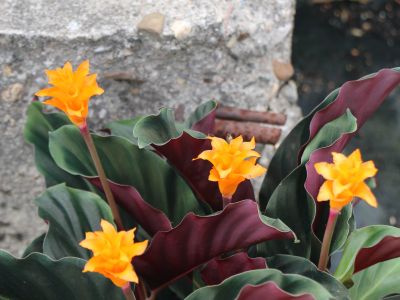Calathea crocata Tassmania
In the spotlights
Autumn is approaching! A beautiful season where nature shows its most stunning colors! For this edition, the FloraPodium has selected a plant that, in our opinion, fits very well at this time of the year. We visited nursery Tass where Ronald van der Knaap gave us a look behind the scenes of the company and told us everything about the Calathea crocata "Tassmania".
From sweet pepper to pot plant
Brothers Ronald and Rob van der Knaap grew up among the bell peppers. They continued this cultivation for a number of years after they took over from their father. In addition to the peppers, both brothers also had an enormous interest in potted plants. When they got the chance to take over the cultivation of the beautiful orange flowering crocata, they accepted it with both hands. Since then the company has grown into the largest Calathea crocata nursery in the world and annually supplies 600,000 plants to various countries in Europe.
Calathea crocata "Tassmania"
In the Netherlands the Calathea crocata is also called "eternal flame". This can of course easily be explained by her beautiful orange flame-shaped flowers. The Tassmania originated from the breeding of other crocata species. “The Tassmania was number 51 of the 287 selected varieties”, Ronald says enthusiastically. “And every time, at every test, that number 51 stood out again”. The Tassmania is a beautiful compact plant, very strong and with its beautiful brightly colored orange flowers very suitable for the upcoming autumn season. Halloween is at the end of October and the Tassmania is also perfect as a Halloween party decoration.

Care
The cultivation
The crocata is a so-called short day plant. Their natural blooming period is springtime. The natural process is simulated in the greenhouses by means of artificial interventions. In this way Ronald and Rob can supply plants all year round.
Cuttings
The Calathea crocata is a fantastic plant, but very difficult to propagate. At the moment this is partly done in the laboratory, but the most successful propagation still comes from the plants that Ronald and Rob tear themselves. The torn shoots go to a special cutting department, where the shoots can develop roots.
After six weeks, the first plants return from the maternity ward. These are sorted by size, after which they are sent to the correct maternity ward. After three months, the plants are moved to a growth department, where a different climate prevails. Here the plant is allowed to grow vigorously and create as many flower shoots as possible. After about four and a half months, the plants are sorted again. The plants that are large enough are moved to the short day section. The plants that are still a bit small can continue to grow. The short day ward is the last phase. In this phase the flowers grow until they are suitable for sale. It takes an average of ten months from cutting to salable plant, six weeks in maternity ward, three-month growth division, three-month short-day division and two-month flowering division.
Other colors
During our tour we noticed a greenish crocata flower. Ronald told us that the crocata has few genes in the color palette. With many artificial interventions, attempts have been made in the past to break down the orange colors, but actually without any real result. However, a mutant was found in the crop, in which the color of the leaf was somewhat extended to the flower. This gave the flower a somewhat bronze color, but this variety turned out not to be a big commercial success. Ronald prefers to put his energy into the current Tassmania. He would like to scale up to more flowers on a plant and more crop continuity.
Fushion White
At the end of our educational tour, Ronald introduced us to a very special plant. The Calathea "Fusion White". This newcomer was already introduced at a fair in 2018, but due to a huge setback, the production had to be delayed. Now the "Fusion White" is on the rise again and Ronald expects to be able to deliver some time next year. There is already a lot of demand for this special variant, so that is very promising!
FloraPodium, 21 September 2020










